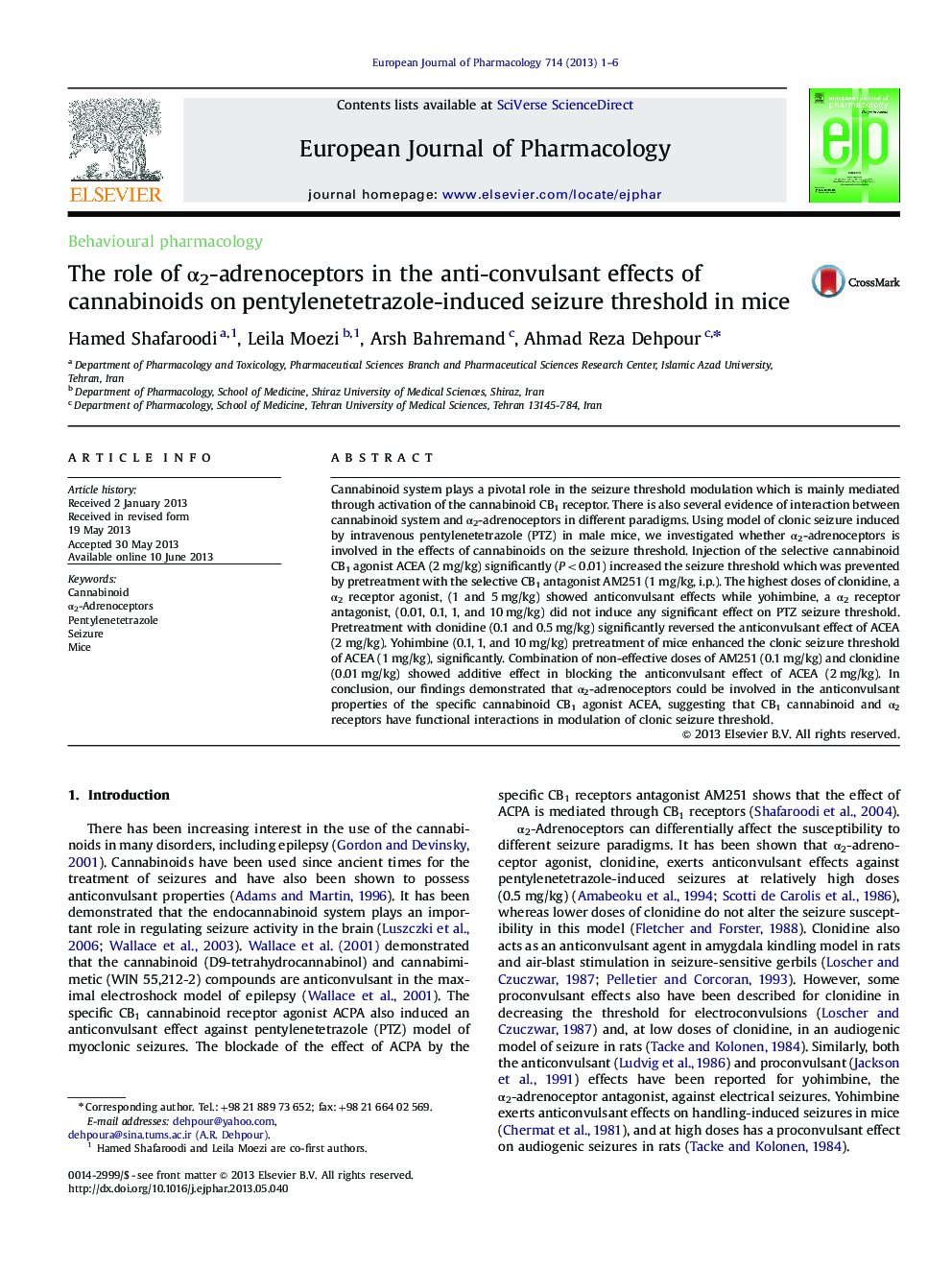| Article ID | Journal | Published Year | Pages | File Type |
|---|---|---|---|---|
| 5828563 | European Journal of Pharmacology | 2013 | 6 Pages |
Cannabinoid system plays a pivotal role in the seizure threshold modulation which is mainly mediated through activation of the cannabinoid CB1 receptor. There is also several evidence of interaction between cannabinoid system and α2-adrenoceptors in different paradigms. Using model of clonic seizure induced by intravenous pentylenetetrazole (PTZ) in male mice, we investigated whether α2-adrenoceptors is involved in the effects of cannabinoids on the seizure threshold. Injection of the selective cannabinoid CB1 agonist ACEA (2 mg/kg) significantly (P<0.01) increased the seizure threshold which was prevented by pretreatment with the selective CB1 antagonist AM251 (1 mg/kg, i.p.). The highest doses of clonidine, a α2 receptor agonist, (1 and 5 mg/kg) showed anticonvulsant effects while yohimbine, a α2 receptor antagonist, (0.01, 0.1, 1, and 10 mg/kg) did not induce any significant effect on PTZ seizure threshold. Pretreatment with clonidine (0.1 and 0.5 mg/kg) significantly reversed the anticonvulsant effect of ACEA (2 mg/kg). Yohimbine (0.1, 1, and 10 mg/kg) pretreatment of mice enhanced the clonic seizure threshold of ACEA (1 mg/kg), significantly. Combination of non-effective doses of AM251 (0.1 mg/kg) and clonidine (0.01 mg/kg) showed additive effect in blocking the anticonvulsant effect of ACEA (2 mg/kg). In conclusion, our findings demonstrated that α2-adrenoceptors could be involved in the anticonvulsant properties of the specific cannabinoid CB1 agonist ACEA, suggesting that CB1 cannabinoid and α2 receptors have functional interactions in modulation of clonic seizure threshold.
